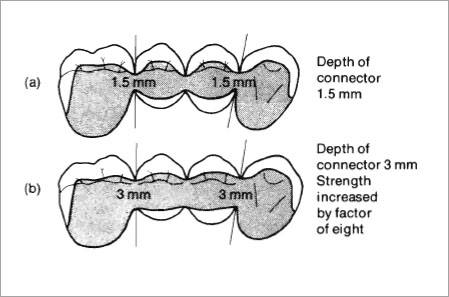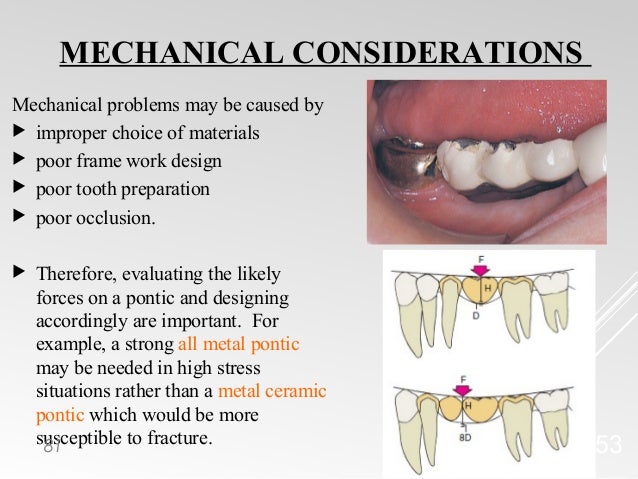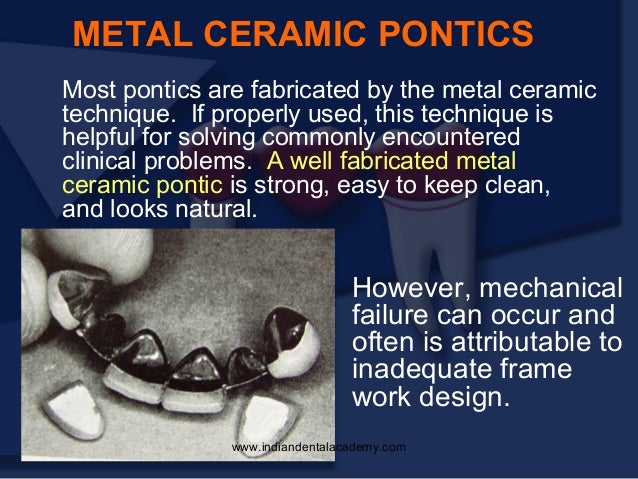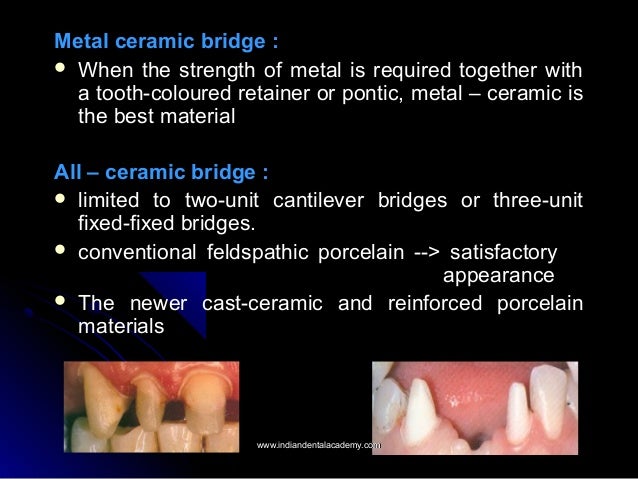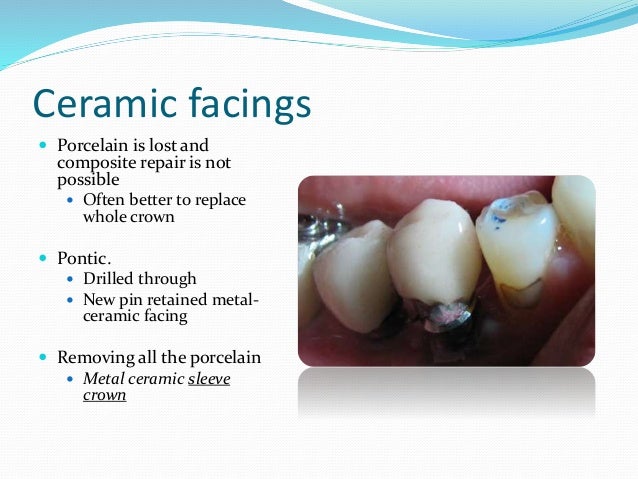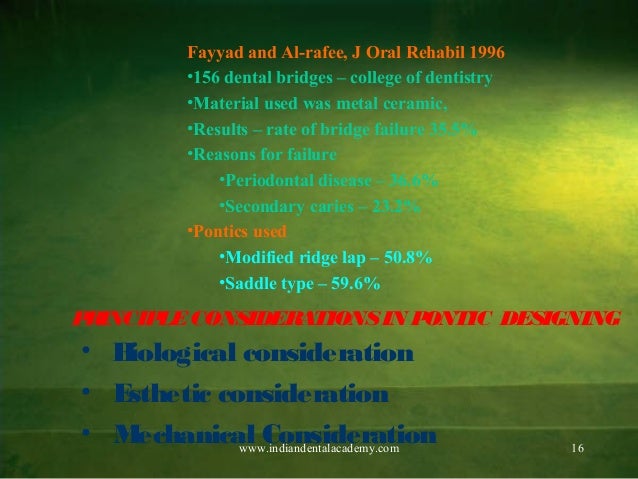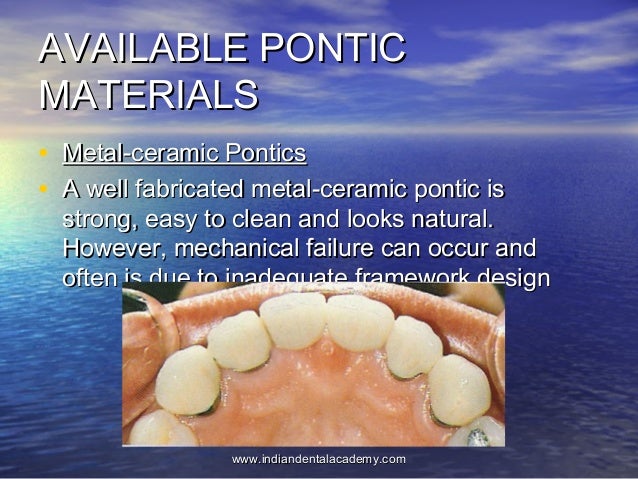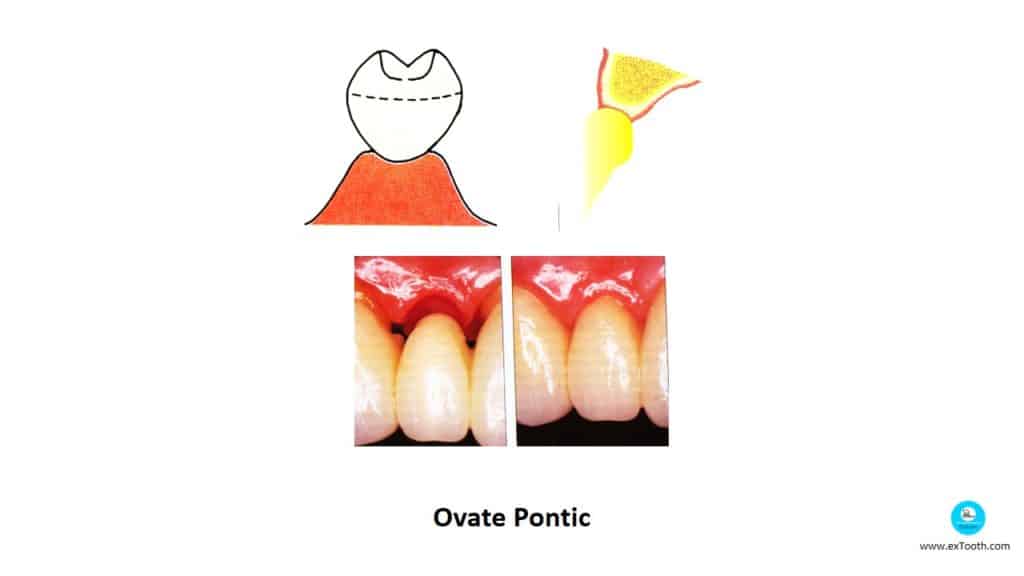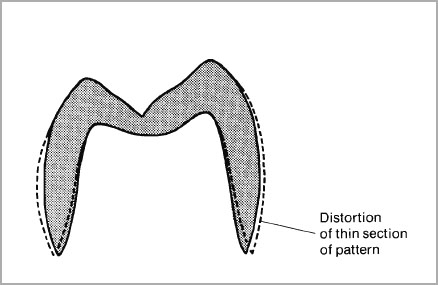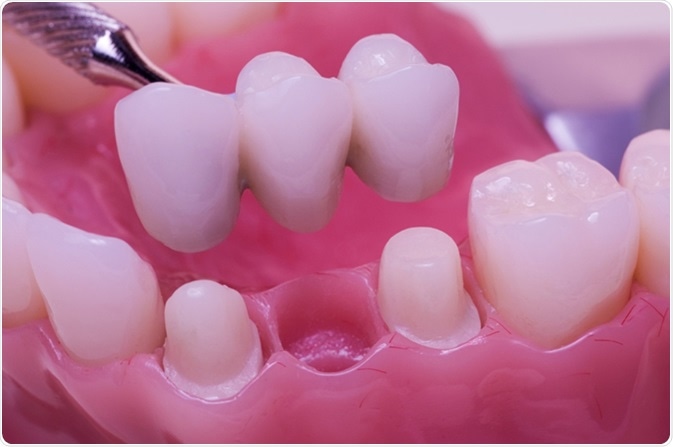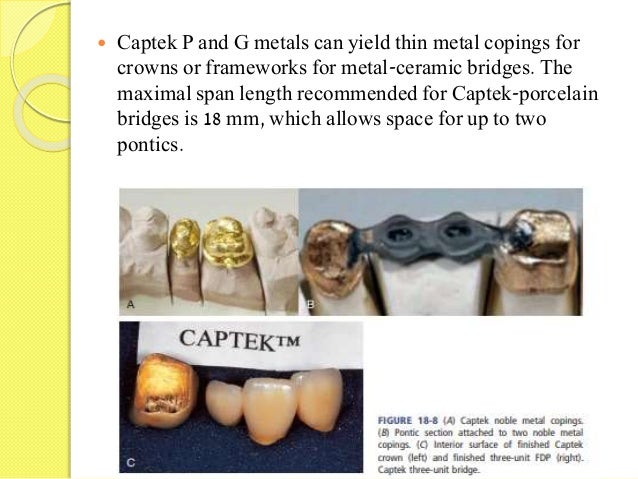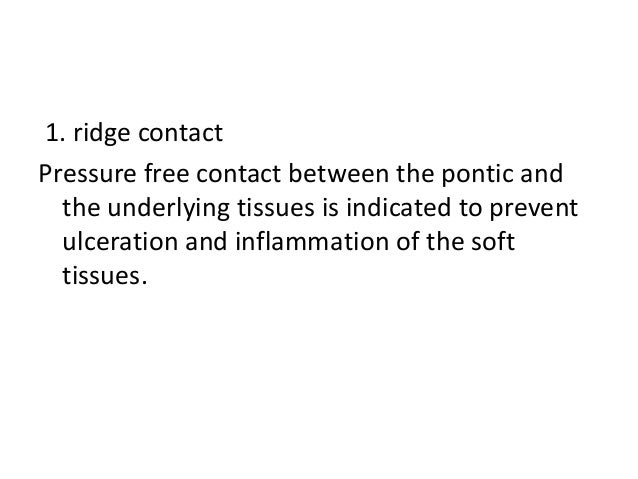Pontic Design For A Metal Ceramic Bridge Should

Pontic design for a metal ceramic bridge should 1.
Pontic design for a metal ceramic bridge should. Minimum thickness of connector for the posterior bridge should be 2 5 mm occluso gingivally and 2 5 mm bucco lingually. Place the porcelain metal joint away from the soft tissues. Allow for complete coverage of the metal by the porcelain. 2 and 4 d.
Asked mar 24 2017 in released q17 by dr kaur 82 990 points ndeb released question. 1 and 3 c. The components of a bridge are retainers pontics and connectors. However wherever possible the maximum thickness of metal should be used commensurate with the maintenance of gingival health.
Control thermal conductivity 4 only all of the above 1 2 3 1 and 3 2 and 4. For resin bonded bridges the pontic should have light contact in intercuspal. Allow for complete coverage of the metal by the porcelain. Provide for a rigid restoration.
Provide for a rigid restoration. Each part of the bridge should be designed individually but within the context of the overall design. Place the porcelain metal joint away from the soft tissues. Allow for complete coverage of the metal by the porcelain.
I will readily admit that for many many years of practice i never gave instructions. Place the porcelain metal joint away from the soft tissues. A pontic exerting too much pressure against the ridge may cause. Sensibility testing assessment of patient aims motivation abutment tooth selection and bridge design.
1 answer 188 views. Fixed movable bridges have a major retainer at one end of the pontic. Provide for a rigid restoration. All of the above.
Appropriate collimation of the x ray beam for the film size reduces 1. Retainers major or minor fixed fixed cantilever and spring cantilever bridges have only major retainer s. 1 2 3 b. Pontic design for a metal ceramic bridge should.
A metal ceramic pontic must fulfill certain requirements. Pontic design for a porcelain fused to metal bridge should 1. Therefore pontic design especially when replacing an existing bridge needs to specifically be addressed just as you would the length and shape of the abutment teeth. However while a traditional bridge uses dental crowns on the abutment teeth a maryland bridge uses a framework of either metal or porcelain that is bonded onto the backs of the abutment teeth.
Pontic design for a metal ceramic bridge should 1.
